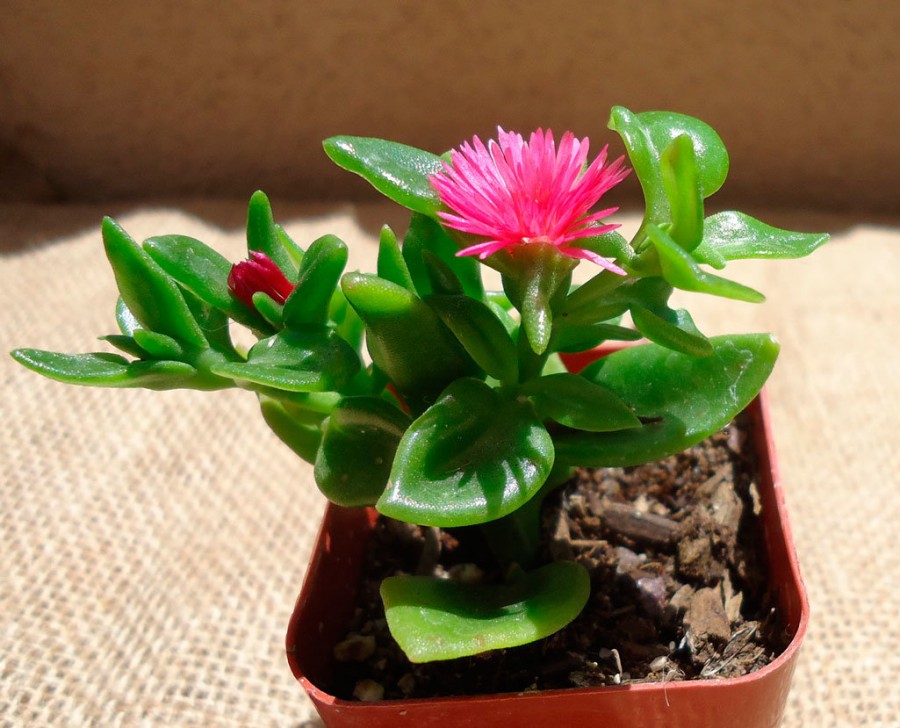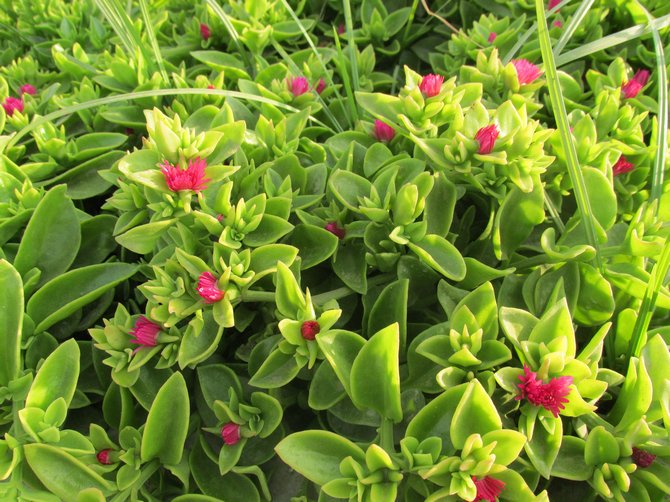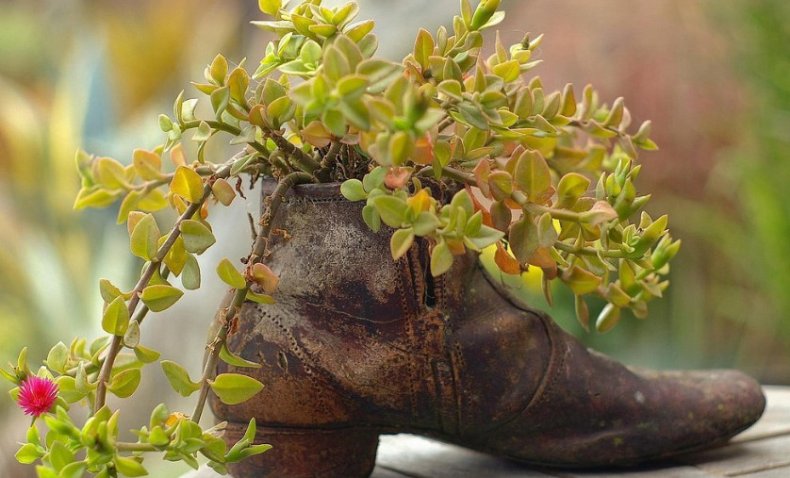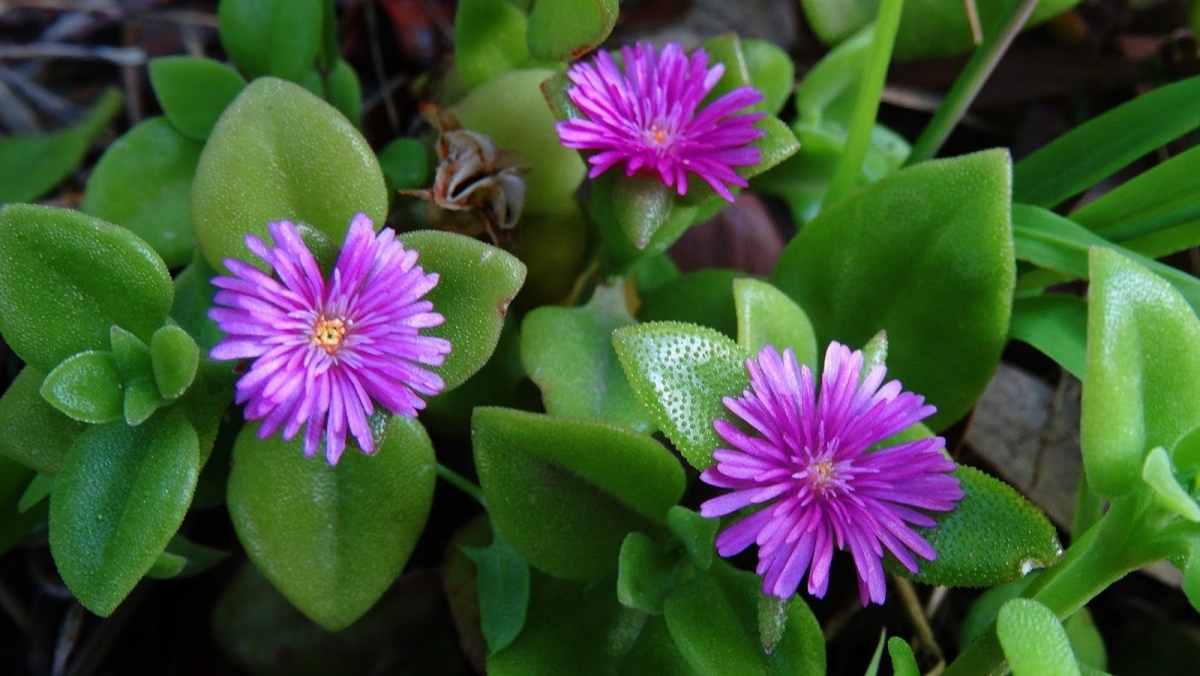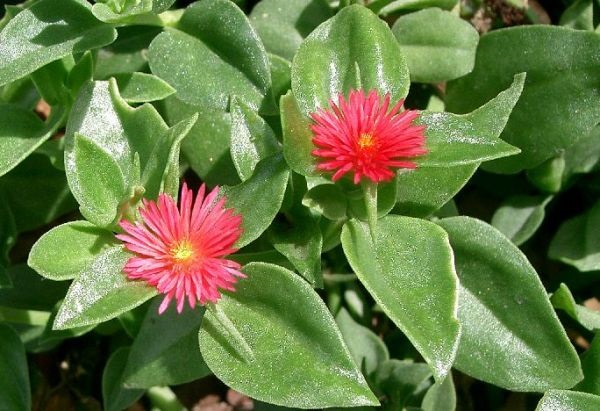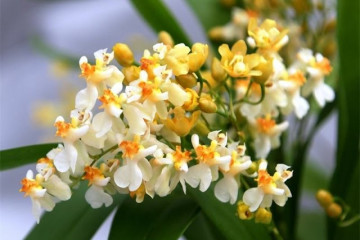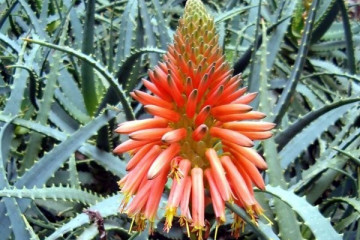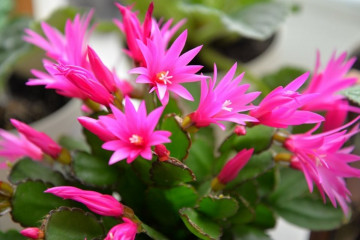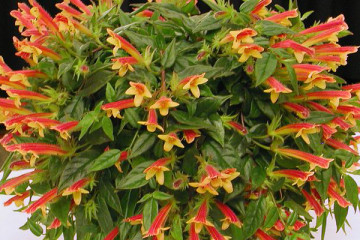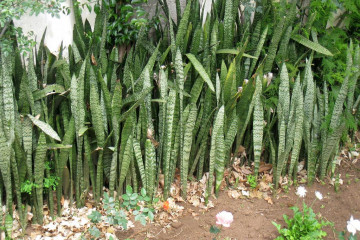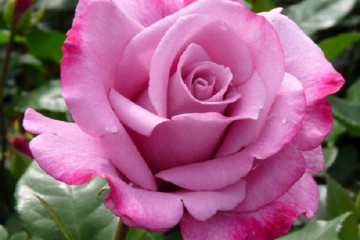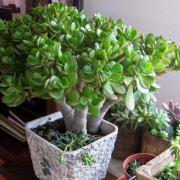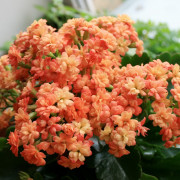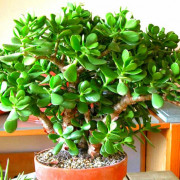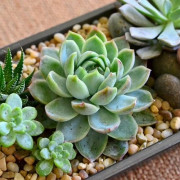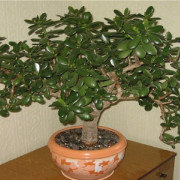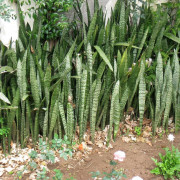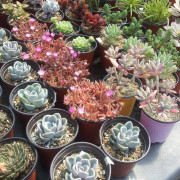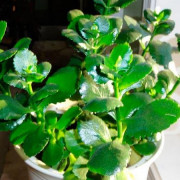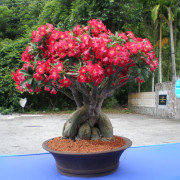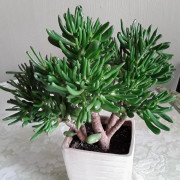Aptenia care and reproduction: varieties and conditions of home keeping
Content:
Aptenia is a wonderful evergreen succulent native to Africa and South America. It got its name from its wingless seeds. Actually, this is how the word "apten" is translated from the Greek language, from which the name is derived. The second name of the plant is mesembriantemum, which means "midday flower". This is because it unfolds at noon.
Characteristic features are a fleshy creeping stem, on which thick green flowers in the shape of a heart are located opposite. The plant forms a fruit in the form of a capsule with chambers.
The main types of flower
At the moment, several types of aptenia are known, which are divided into many subspecies. In addition, a huge number of hybrids of a flower with other plants have appeared.
Aptenia variegated
A beautiful succulent native to South Africa. Like any succulent, it is unpretentious to water, the stem can be 30 centimeters long. The color is light purple, the size is small. Best planted in partial shade. The main feature is the decorative edging along the edge of the sheet in a light yellow color. The leaves have variegated blotches over the entire area of the leaf plate.
Aptenia cordifolia
The most common form. Its height can be up to 25 centimeters. This species looks most interesting in a flower pot: the shoots hang down by 50-60 centimeters. Blooms from April to August. At this time, the plant is covered with a gigantic amount of purple, burgundy and lilac flowers. The leaves are colored green, they reach 25 millimeters in length, and their diameter is 15 millimeters.
Aptenia variegated
This is the same as the variegated aptenia succulent (variegat). In turn, it is a type of aptenia cordifolia.
Separately, the flower "aptenia lanceolate" can be distinguished, which is characterized by long green shoots 80 cm long. The leaves have a lanceolate shape. This variety resembles a money tree, only the latter is somewhat darker.
Aptenia care at home
Care for all succulents is the same, aptenia is no exception. It is necessary to understand in more detail how to care for it, to consider the features of temperature, lighting, watering, soil and fertilization, as well as humidity.
Temperature and lighting
Aptenia should be placed in a bright room at home to ensure good flowering. Lighting should be diffused, direct rays harm the plant and are fraught with the appearance of many diseases. It is optimal to grow the plant on a windowsill near windows that face the east side. The worst of all is to grow it on the southern windows, because here the flower can get sunburn. To solve this problem, you can slightly block the plant from light with blinds or curtains.
When spring comes, it is recommended to artificially increase the illumination. It is enough to use 50-watt lamps for this.
If you grow it on the north side or in the shade, then the decorative qualities of the plant are significantly reduced. Leaves become wrinkled, flowers just don't appear.
Aptenia growth is divided into two phases: growth and rest.Each of them has its own temperature regime. During growth, the temperature must be maintained between 22 and 25 degrees This is the period that falls in October-February. The resting phase of the succulent is from March to September. At this time, the temperature should be in the range of 5 to 8 degrees.
Watering
A beautiful flower is aptenia, care and reproduction of which is not difficult. In particular, she is unpretentious to watering. During the active phase, it is necessary to water the plant when the topsoil is completely dry. It is very important not to overdo it, because in this case the plant will lose its decorative appearance and may die.
Watering is carried out at the root and throughout the earthen coma in a pot.
Before using water from the mains for irrigation, it is necessary to rid it of precipitation. To do this, insist in an open container for several days. If the plant is in the dormant phase, it is enough to water it 2-3 times a month.
Priming
Under natural conditions, the soil is rather poor. There is a lot of sand and stones in it. There is almost no fertile layer, and the plant is adapted to such conditions. It should not be grown in soil with a high nitrogen content, as this can lead to rotting and, as a result, death.
Humidity
The plant is used to staying in a dry climate for a long time, so air deprived of moisture will not be a problem for aptenia (care at home is much easier for this reason). At the same time, excessive moisture is contraindicated for this flower.
It is also not necessary to spray and rinse the succulent to moisturize. If you need to remove dust from the leaves, it is better to do this with a dry cloth.
If the air is too dry, this also has a bad effect on the decorative qualities. A sign that the plant is overheated or dry is the appearance of yellowness on the leaves. If such signs are found, the flower must be transferred to a cool place. However, it cannot be moistened.
Top dressing
If there is too much nitrogen in the soil, the plant may die. Therefore, nitrogen fertilizers cannot be used to feed the plant. It is best to take special mixtures designed for succulents. These can be purchased at flower shops. In them, the nutrient content is in such an amount that will not harm the plant.
During the active growth phase, it is necessary to feed the aptenia at least once a month, preferably more often. When the flower is at rest, it does not need feeding.
How aptenia multiplies
Almost any plant reproduces in two ways: by cuttings and with the help of seeds. The first is also called vegetative. It is much faster and guarantees better results.
In addition, the vegetative method allows you to make the same plant as the parent. When propagated by seeds, the offspring may have a different set of genes and not inherit a number of traits important for the decorative qualities of aptenia. In particular, this method is not recommended for hybrid breeding.
Seeds
This procedure is difficult due to the fact that the seeds have an incredibly low germination rate. Therefore, they must be laid on the soil surface. As a substrate, you can use mixtures for rooting cuttings, although if this is not the case, it is enough to have only sand.
The seeds are stored at a temperature of 21-25 degrees in a place with good diffused lighting. The substrate is moistened before spreading the seeds, after this procedure it is covered with glass or film. As soon as the first shoots appear, the protective coating is removed.
As for watering, it needs to be done often, but little by little.
Cuttings
First you need to select the stalk. This can be done during formative pruning or separately. It is forbidden to put it directly into water in order to take root. Moreover, before planting, it must be dried for 12 hours, while avoiding direct sunlight.
The grafting substrate consists of 1 part succulent soil and 2 parts sand. They put it in tiny pots and moisten it, put the cuttings there and wait for them to take root. To maintain the moisture content of the soil, it is necessary to spray it with a spray bottle from time to time. You can transplant a plant into a full-fledged pot when the first leaves and shoots appear on it.
Thus, aptenia is an unpretentious plant to care for, which is not demanding on watering and humidity. Even when growing it, there are nuances.
